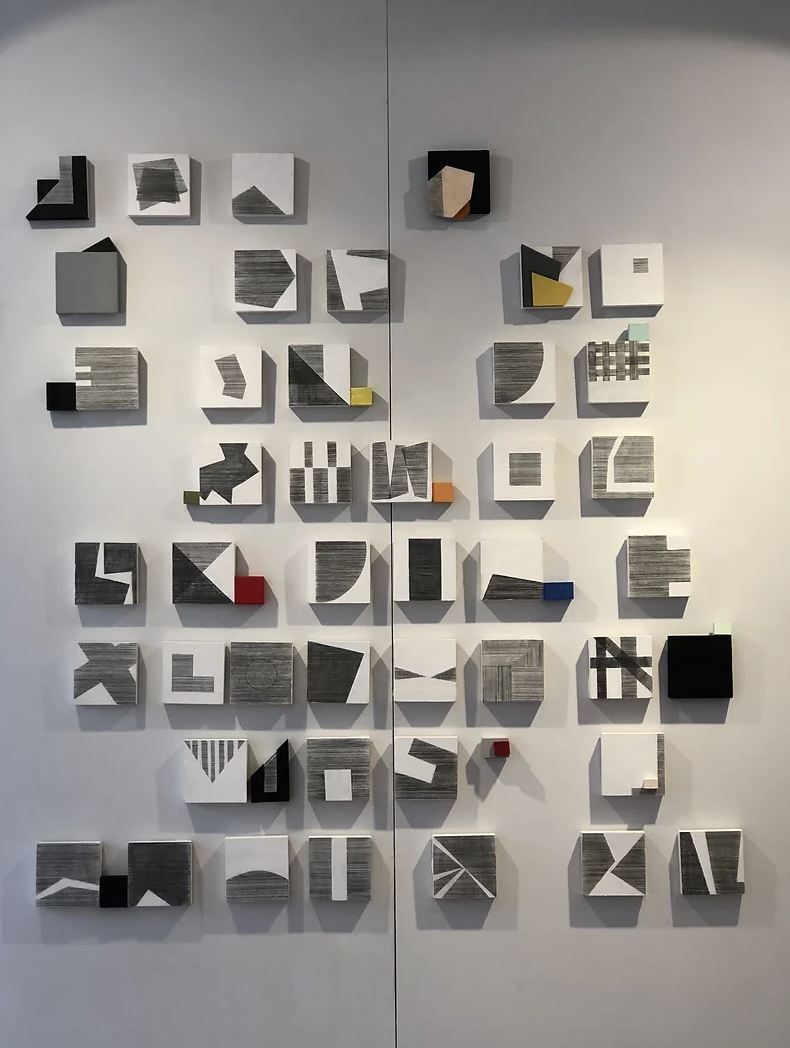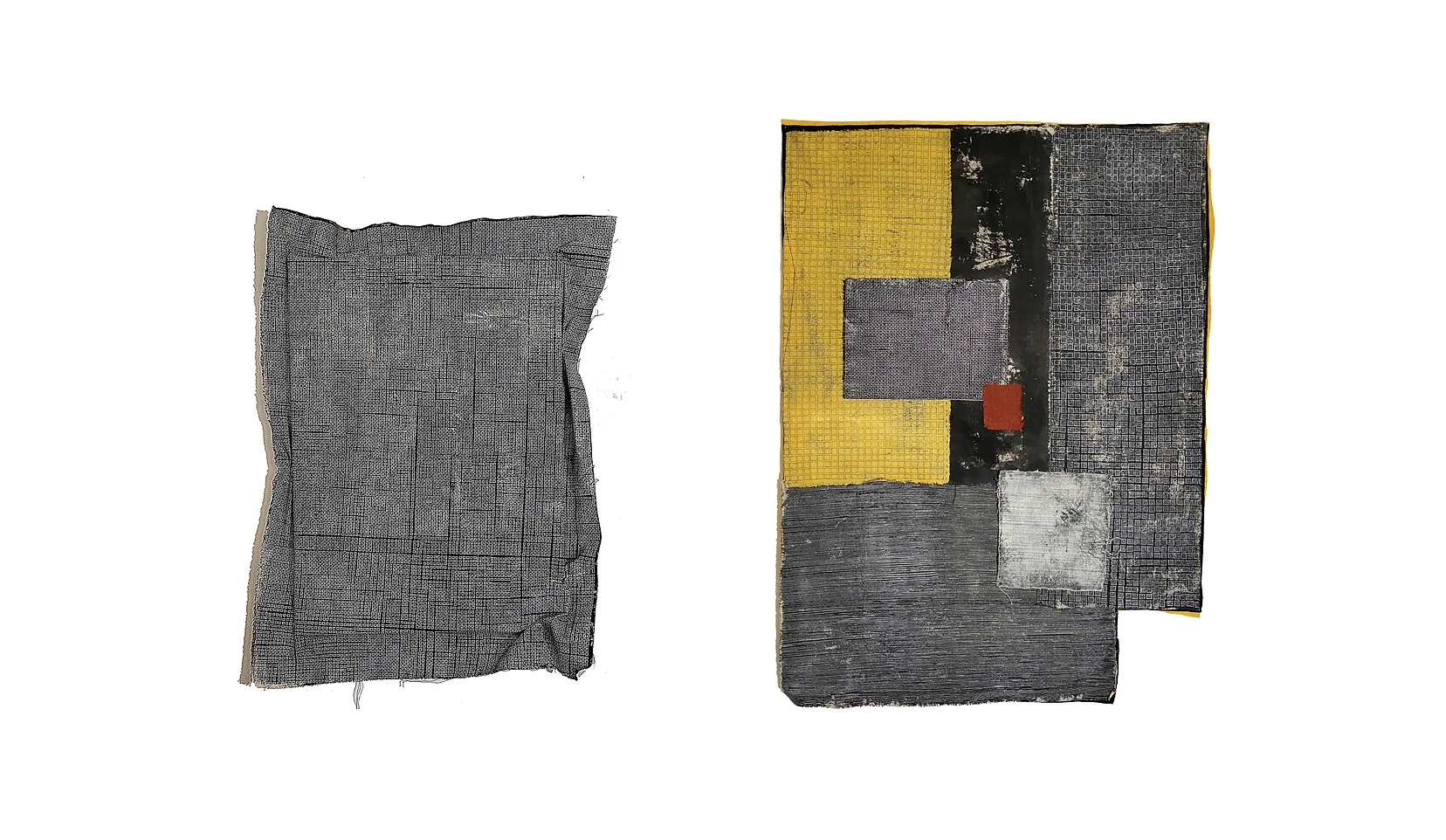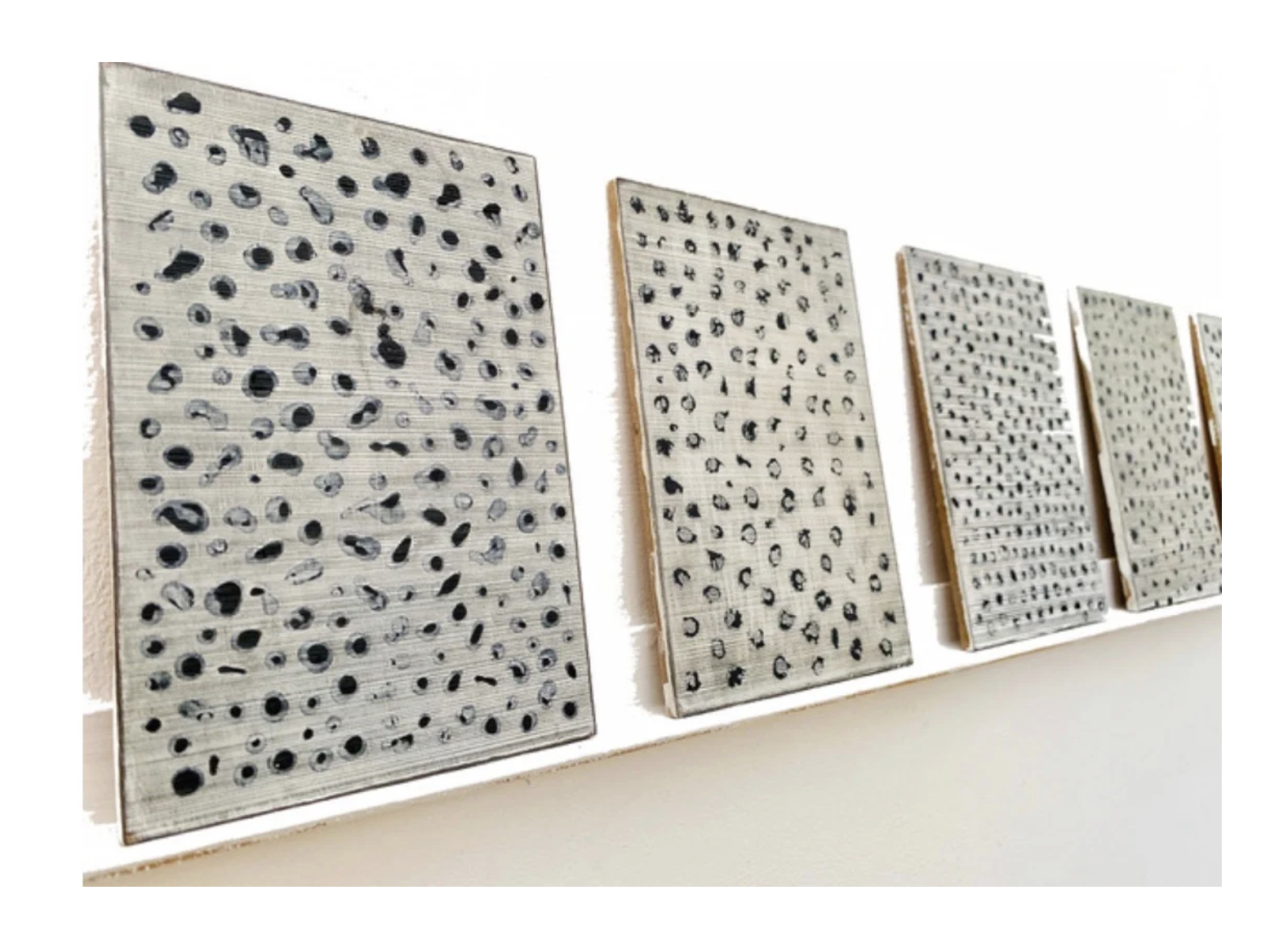Our featured Artist this month is Hanna Ten Doorkaat…
Hanna ten Doornkaat studied BA (sculpture) at Kingston University and MA (sculpture) at Wimbledon School of Art (UAL). Her work was shortlisted for major exhibitions like the Jerwood Drawing Prize, London, the Royal Academy Summer Exhibition, and the Derwent Art Prize. She has shown work in many exhibitions both in the UK and internationally.
1 - Could you explain your practice? Only you know why you do what you do.
For a long time, my work has been an investigation of the meaning and concept of drawing versus painting with lines and grids playing an important part. During the pandemic the work changed from the very formal geometric shapes to a more amorphous aesthetic causing a certain tension. I regularly try to challenge the boundaries between two and three dimensions.
During the course of this year I have exchanged pencils and pens to experiment with a different medium, thread and needle to draw lines with. The general idea of the line remains at the centre of it and the questioning of what constitutes a drawing.
As a result of the even more time consuming process than the previous works, the most recent stitched drawings made me look at what role touch plays in how we perceive the world around us and how the temptation to touch an artwork due to its tactile qualities could become an important part of how work is shown and how the message ‘touch - don’t touch’ could become something similar to a ‘Pavlovian conditioning”.
The new works are a combination of stitched drawing and painting often merging the two media. Different lengths of waxed cotton threads are stitched vertically and repeatedly into jute bags which are primed with gesso and painted with acrylic or water soluble oil paint. The beginning and ends of the threads are left visible on the front of the work to create a 3D effect which is further enhanced by the malleable jute bag which is stapled to a stretcher inside the bag.
2 - Is art relevant today?
I am a bit puzzled by this question. It feels almost like asking if ‘cave paintngs’ are relevant today. There is no doubt that art will always be relevant. It is an important part of our cultural heritage and it does not matter whether it is the written language, music, painting, sculpture, and in more recent .mes photography or digital technology and even more recent NFTs. All these are like partcles which put together are the cornerstones of our human existence and culture.
Artists, of whatever category, express their views of how they see the world around them with their own ‘language’ and it doesn’t make any difference what medium they use to do so.
3 – We are always asked what other artists influence us, we want to know what art you don’t like and which influences you?
4- If you could go back 10-20 years what would you tell your younger self?
This is very much a gender-related question because the question for a female artist of how to proceed and pursue a career as an artist is oUen determined by personal decisions such as whether or not to have a family.
Generally, I wish I could have started earlier and not as a mature artist but I was lucky that I had the means when the .me came to pursue my dream and do what was required to get to where I am now.
I think the most important thing for an artist is consistency and making as much work as possible.
5 – If you could go forward 10-20 years what do you hope to have done or not done?
I have achieved what is important to me in recent years. Making art is an antidote for boredom and even loneliness for me and I can’t remember a .me when I was not ‘making’ anything. I love what I am doing and could not live without it.
I oUen wonder what it is that drives so many of us artists. Is it an innate pressure to leave something of ourselves behind that makes our existence visible? The most important thing for me as a ‘professional’ artist is to remain consistent, to continue making art, and be able to show art and also curate exhibitions occasionally.






